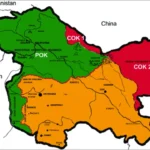A recent scientific analysis warns that close to 40% of the planet’s glaciers are on track to disappear, even if current international climate goals are achieved. This concerning forecast highlights the pressing need for stronger climate action and reflects the long-lasting consequences of human-driven global warming.
🌍 Melting Glaciers: A Clear Sign of Climate Change
Glaciers, the massive ice reservoirs found on nearly every continent, play a vital role in maintaining the Earth’s climate balance. They regulate sea levels, support ecosystems, and supply fresh water to millions of people. But a recent report from a team of international climate scientists warns that approximately 104,000 of the planet’s 215,000 glaciers are already past the point of no return.
This prediction is based on models using current global climate pledges and greenhouse gas emission levels. Even if nations stick to their promises under the Paris Agreement, about 40% of glacier mass will be lost by the year 2100.
🔍 Key Findings of the Study
- Glaciers under 1 km² in size are at highest risk, and many are expected to vanish entirely by the end of the century.
- If global temperatures increase by 2.7°C, up to 75% of the world’s glacier volume could be lost.
- Limiting global warming to 1.5°C — the most ambitious target set by the Paris Climate Agreement — would still result in about 26% glacier loss.
The data also suggests that most of the glacier melt is already locked in due to past carbon emissions, and changes now can only mitigate — not prevent — future losses.
🌊 Impacts on Sea Level Rise and Water Supply
The melting of glaciers contributes significantly to global sea level rise, threatening low-lying coastal areas, island nations, and densely populated deltas.
According to the study:
- The projected ice loss could raise global sea levels by 90 mm to 154 mm by 2100.
- Significant rivers such as the Ganges, Yangtze, and Indus depend extensively on meltwater from glaciers to sustain their freshwater flow. Declines in glacier mass could lead to severe water shortages affecting billions of people.
In regions like the Himalayas, Andes, and parts of the Alps, glaciers act as natural water towers. Their retreat not only endangers ecosystems but also compromises agriculture, hydropower, and drinking water supplies.
🧬 Scientific Community Reacts
Experts in climate science and glaciology globally are viewing this new information as a critical alert. Dr. Michael Zemp, a glaciologist who did not participate in the research, commented,
“Glacier loss is now a reality we must confront. Every fraction of a degree of warming makes a difference in preserving what remains.”
The study emphasizes that while some degree of melting is inevitable, immediate action to reduce emissions could dramatically slow the rate of glacier retreat.
🛑 What Can Be Done?
While the grim forecast paints a bleak picture, it also reinforces the importance of taking aggressive climate action now. Key strategies include:
- Cutting greenhouse gas emissions rapidly by transitioning to renewable energy sources.
- Protecting glacier-fed ecosystems through conservation and climate adaptation projects.
- Allocating resources toward water infrastructure to adapt to reduced glacial runoff.
- Supporting international climate agreements that push for binding emissions reductions.
Personal actions — from reducing fossil fuel usage to supporting climate-responsible policies — also contribute to broader solutions.
🧭 The Path Ahead
Though 40% of glaciers are projected to disappear, how quickly and how severely this plays out still depends on the choices humanity makes today. The path forward requires united global efforts, urgent policy changes, and long-term commitment to sustainability.
If climate goals are strengthened and emissions are rapidly curbed, the remaining glaciers may still be saved, preserving critical ecosystems and minimizing the most catastrophic impacts of sea level rise.
📝 Final Thoughts
Glaciers are not just icy relics of the past — they are vital life-support systems for Earth. The prediction that nearly 40% are doomed to melt serves as a powerful indicator of climate change’s irreversible momentum. Yet, the story isn’t entirely written. With science, innovation, and global cooperation, there is still hope to protect the glaciers that remain and secure a more stable future for generations to come.





